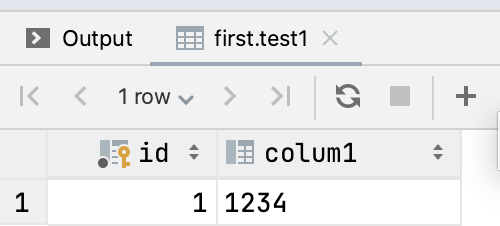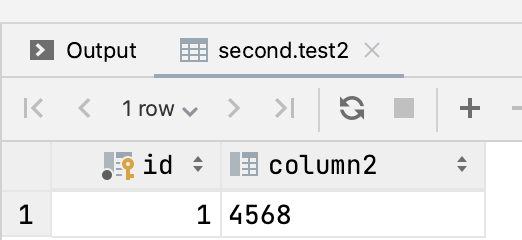前言
在上篇文章讲到了如何配置单数据源,但是在实际场景中,会有需要配置多个数据源的场景,比如说,我们在支付系统中,单笔操作(包含查询、插入、新增)中需要操作主库,在批量查询或者对账单查询等对实时性要求不高的场景,需要使用读库来操作,依次来减轻数据库的压力。那么我们如何配置多数据源?
这里还是基于springboot应用的情况下,我们看一下怎么配置。
因为SpringBoot会实现自动配置,但是SpringBoot并不知道我们的业务场景分别要使用哪一个数据源,因此我们需要把相关的自动配置关闭。
首先,生成项目骨架,引入相应的依赖
|
1
2
3
4
5
6
7
8
9
10
11
12
13
14
15
16
17
18
19
20
21
22
23
24
25
26
27
28
29
30
31
32
33
34
35
36
|
<dependency> <groupId>org.springframework.boot</groupId> <artifactId>spring-boot-starter-jdbc</artifactId> </dependency> <dependency> <groupId>org.springframework.boot</groupId> <artifactId>spring-boot-starter-actuator</artifactId> </dependency> <dependency> <groupId>org.springframework.boot</groupId> <artifactId>spring-boot-starter-web</artifactId> </dependency> <dependency> <groupId>com.h2database</groupId> <artifactId>h2</artifactId> <scope>runtime</scope> </dependency> <dependency> <groupId>org.projectlombok</groupId> <artifactId>lombok</artifactId> <optional>true</optional> </dependency> <dependency> <groupId>org.springframework.boot</groupId> <artifactId>spring-boot-starter-test</artifactId> <scope>test</scope> </dependency> ```**然后,在Application排除自动装配类** ```java@SpringBootApplication(exclude = { DataSourceAutoConfiguration.class,DataSourceTransactionManagerAutoConfiguration.class,JdbcTemplateAutoConfiguration.class})@Slf4jpublic class MultiDataSourceDemoApplication {} |
上面代码中,我们排除了DataSourceAutoConfiguration、DataSourceTransactionManagerAutoConfiguration、JdbcTemplateAutoConfiguration三个类,然后就可以自己定义DataSource了。
配置数据源
|
1
2
3
4
5
6
7
8
9
10
11
12
13
14
15
16
17
18
19
20
21
22
23
24
25
26
27
28
29
30
31
32
33
34
35
36
|
//第一个数据源 @Bean @ConfigurationProperties("first.datasource") public DataSource firstDataSource() { return DataSourceBuilder.create().build(); } @Bean public JdbcTemplate firstJdbcTemplate() { return new JdbcTemplate(firstDataSource()); } @Bean @Resource public PlatformTransactionManager firstTxManager(DataSource firstDataSource) { return new DataSourceTransactionManager(firstDataSource); } //第二个数据源 @Bean @ConfigurationProperties("second.datasource") public DataSource secondDataSource() { return DataSourceBuilder.create().build(); } @Bean public JdbcTemplate secondJdbcTemplate() { return new JdbcTemplate(secondDataSource()); } @Bean @Resource public PlatformTransactionManager secondTxManager(DataSource secondDataSource) { return new DataSourceTransactionManager(secondDataSource); } |
application.properties的配置项信息
|
1
2
3
4
5
6
7
8
9
|
management.endpoints.web.exposure.include=*spring.output.ansi.enabled=ALWAYSfirst.datasource.jdbc-url=jdbc:mysql://localhost:3306/firstfirst.datasource.username=rootfirst.datasource.password=xxxsecond.datasource.jdbc-url=jdbc:mysql://localhost:3306/secondsecond.datasource.username=rootsecond.datasource.password=xxx |
看一下表结构和数据


运行测试代码:
|
1
2
3
4
5
6
7
8
|
@Test public void testMutilDataSource(){ firstJdbcTemplate.queryForList("SELECT * FROM test1") .forEach(row -> log.info("记录:"+row.toString())); secondJdbcTemplate.queryForList("SELECT * FROM test2") .forEach(row -> log.info("记录:"+row.toString())); } |
我们看一下运行效果:

我们可以看到,两个数据源都初始化成功了,并且各自数据源执行的结果准确。
上面的方式没有集成Mybatis,使用的是jdbcTemplate,网络上还有很多配置方式,比如动态选择数据源,大同小异,不过笔者还是建议不同的业务单独指定数据源,容易维护。
我们已经演示了简单的单数据源和多数据源的配置方式,我们下一篇文章将讲一下,SpringBoot默认的连接池HikariCP。
到此这篇关于Spring多个数据源配置详解的文章就介绍到这了,更多相关Spring多数据源配置内容请搜索服务器之家以前的文章或继续浏览下面的相关文章希望大家以后多多支持服务器之家!
原文链接:https://www.cnblogs.com/coderaniu/p/15180116.html













